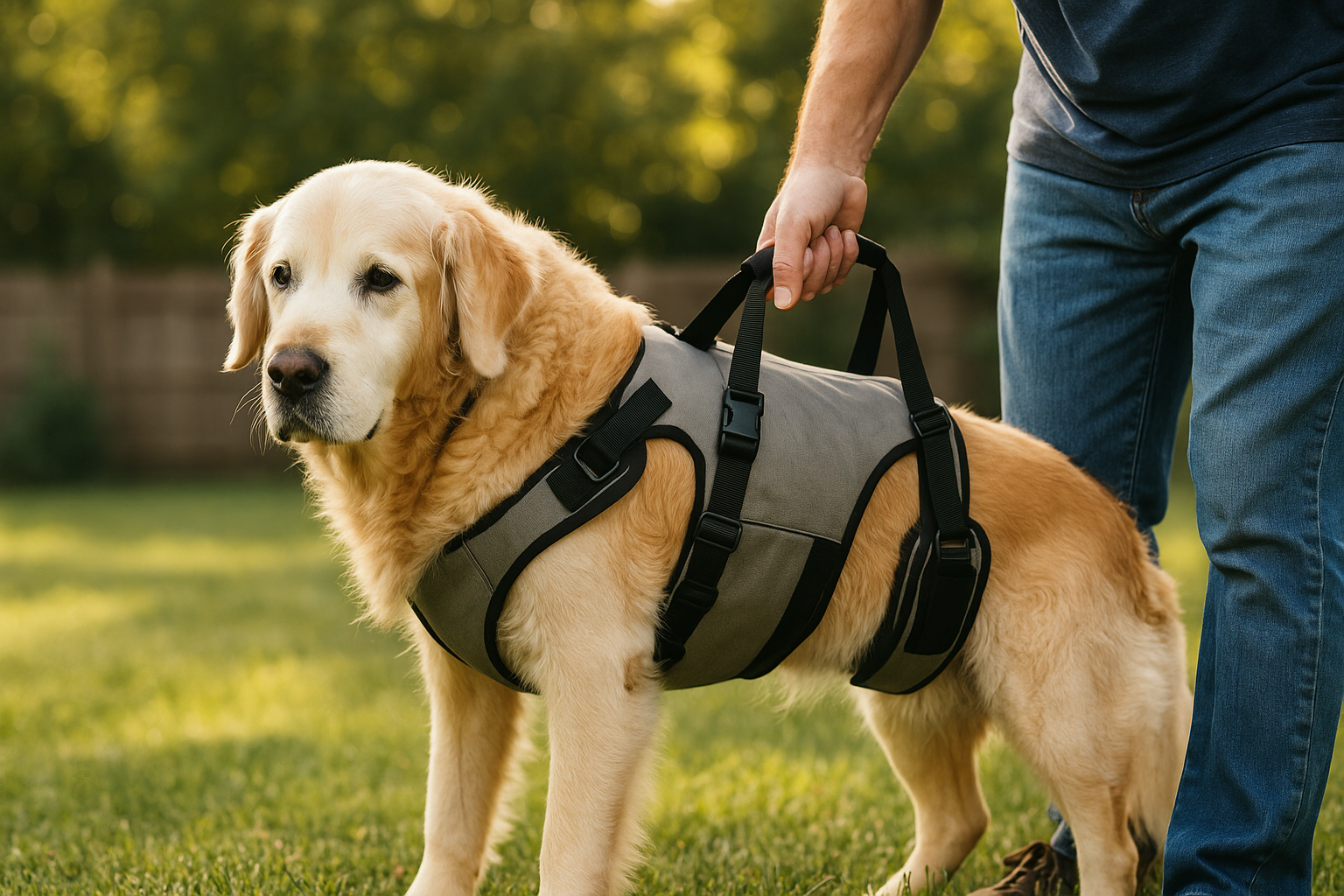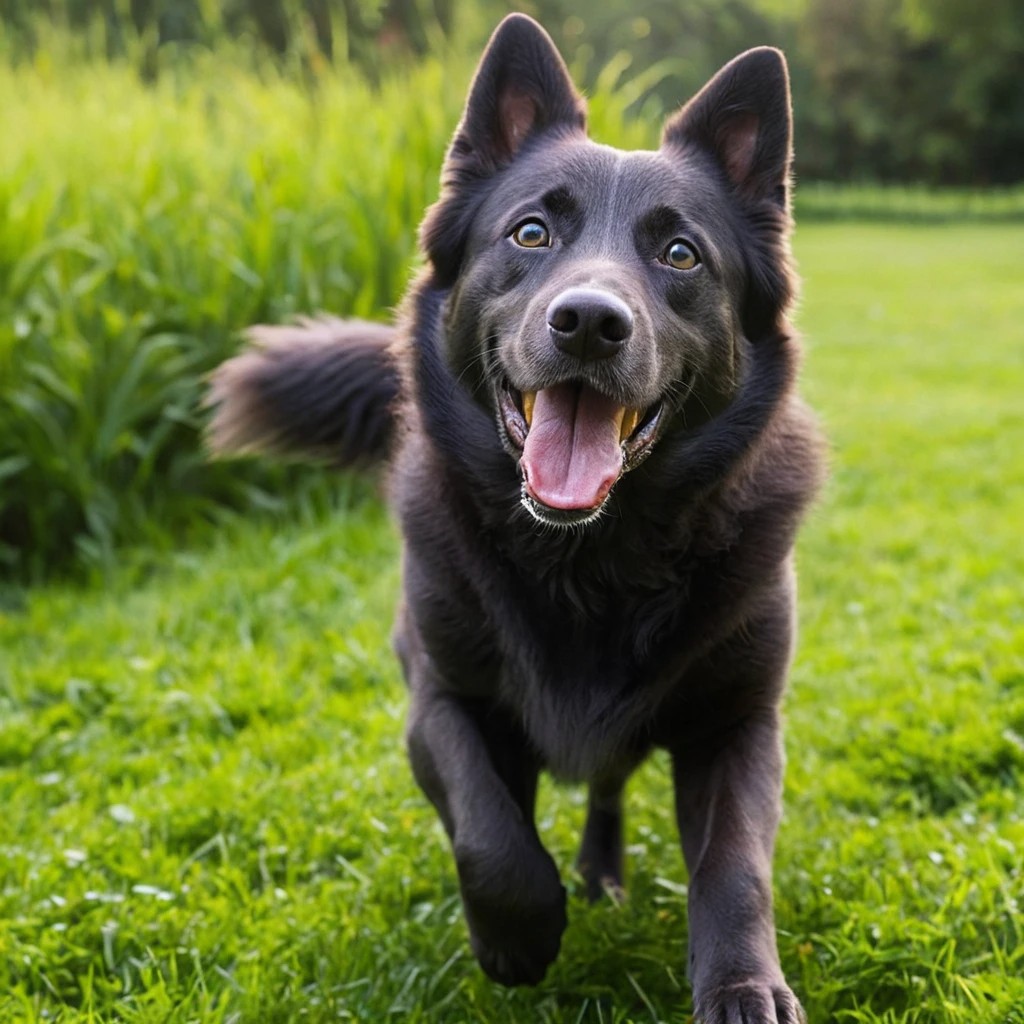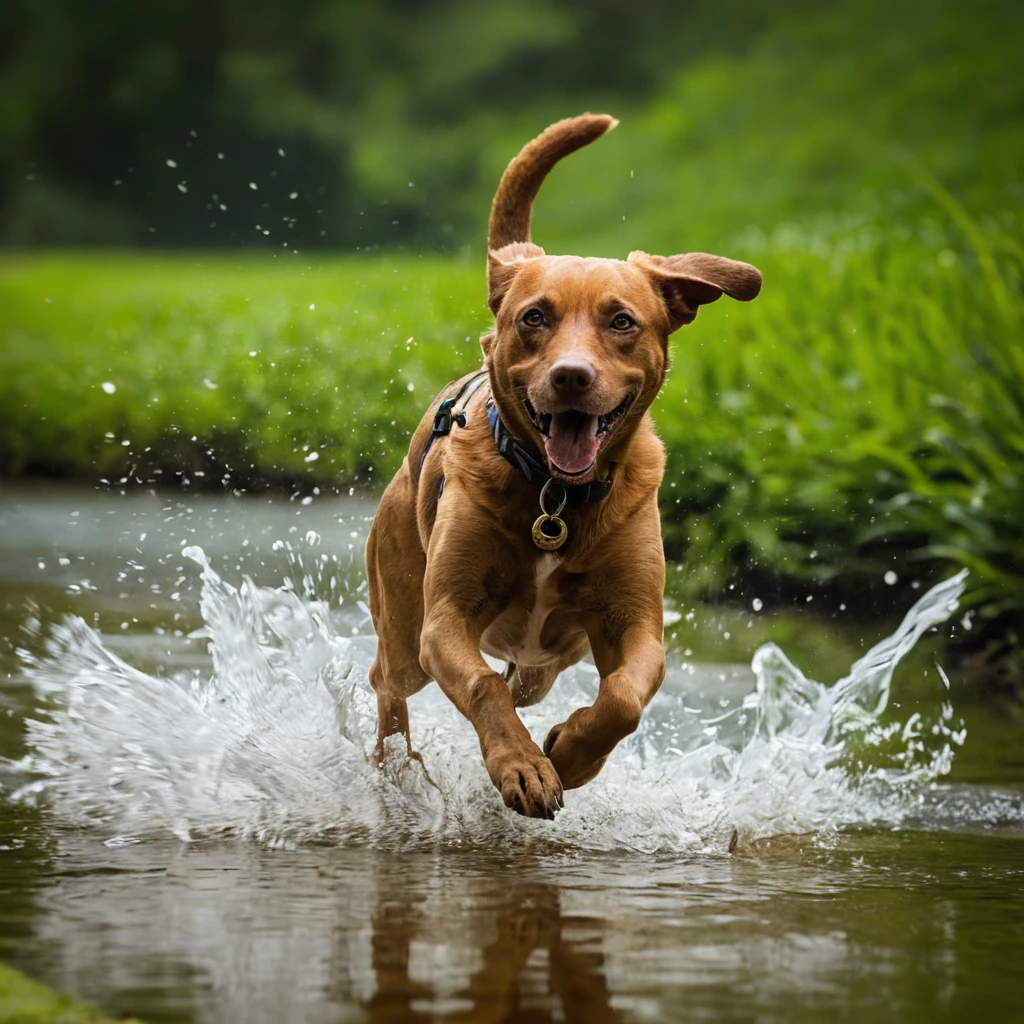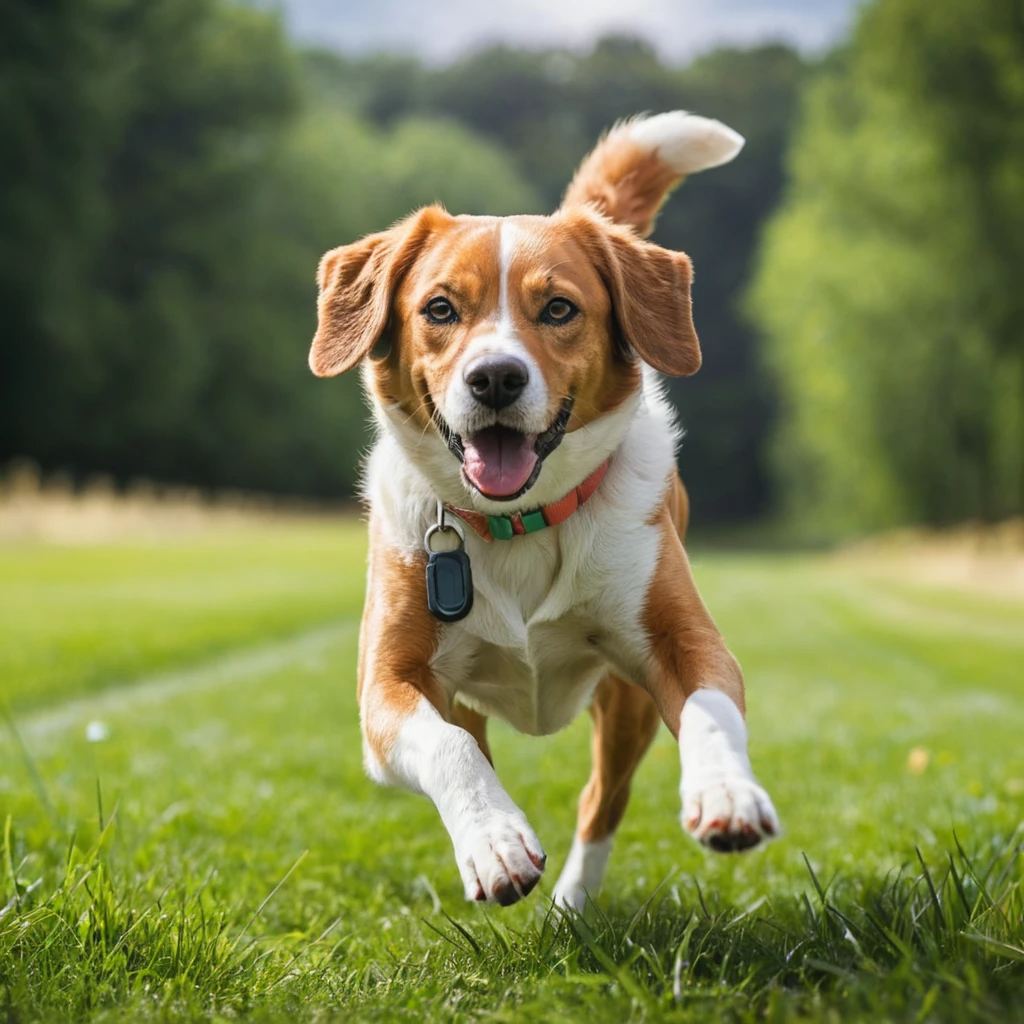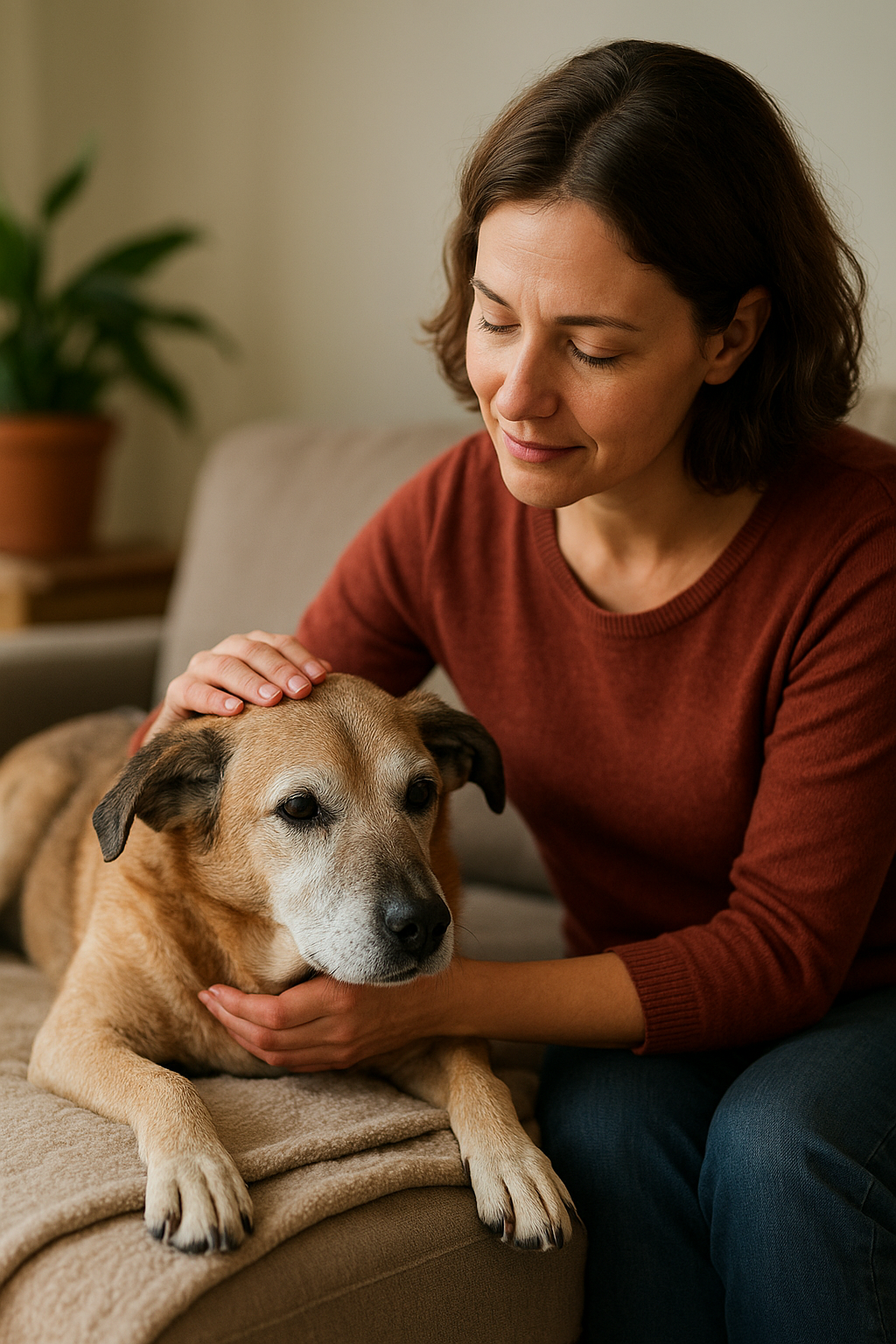À medida que os cães envelhecem, os problemas de mobilidade geralmente se tornam um dos sinais mais notáveis – e comoventes – do envelhecimento. O que antes era um salto simples no sofá ou um sprint divertido do outro lado do quintal pode se tornar doloroso ou até impossível para um cachorro sênior.
O declínio da mobilidade em cães mais velhos é comum, mas isso não significa que é intratável. Com as estratégias e ferramentas certas, você pode ajudar seu cão a permanecer ativo, independente, e confortável até os anos mais velhos.
Neste artigo, exploraremos as causas dos problemas de mobilidade, os sinais a serem observados e várias maneiras de apoiar e gerenciar o movimento do seu cão envelhecido.
Causas comuns de problemas de mobilidade em cães seniores
Compreender o que está por trás da diminuição da mobilidade do seu cão ajuda a tratar a causa raiz – não apenas os sintomas. Os motivos mais frequentes incluem:
- Artrite (osteoartrite)
Uma doença articular degenerativa que leva à inflamação, rigidez e dor. Extremamente comum em cães mais velhos.
- Displasia do quadril
Uma condição genética em que a articulação do quadril não se encaixa corretamente, piorando com o tempo e causando dor ou claudicação.
- Doença do disco intervertebral (IVDD)
Comum em cães de corpo há muito problemas nervosos e, às vezes, paralisia.
- Atrofia muscular
A perda de massa muscular devido à inatividade ou envelhecimento pode enfraquecer o corpo de um cão, dificultando o movimento.
- Distúrbios neurológicos
Condições como mielopatia degenerativa afetam a medula espinhal e podem levar a movimentos ou paralisia descoordenados.
- Obesidade
O excesso de peso coloca mais tensão nas articulações e músculos, agravando a dor e acelerando a deterioração.
Sinais Seu cachorro está lutando com a mobilidade
Alguns sinais são óbvios, enquanto outros são mais sutis. Fique de olho em:
Relutância em subir escadas ou pular
Mancando ou rigidez, especialmente após descansar
Dificuldade em levantar -se ou deitar
Perda muscular nas patas traseiras
Escorregando ou caminhando instável
Evitando caminhadas ou brincar
Ofegante, choramingando ou gritando durante o movimento
Qualquer um desses sinais justifica uma visita ao veterinário para diagnóstico adequado e para iniciar um plano de tratamento.
Diagnóstico e avaliação veterinária
Antes que você possa ajudar seu cão a se mover melhor, um diagnóstico adequado é crucial. Seu veterinário pode usar:
Exames físicos para avaliar a dor e a amplitude de movimento
Raios-x ou ultrassom para verificar articulações, coluna vertebral e estruturas internas
Exames de sangue para descartar infecções ou condições sistêmicas
Exames neurológicos para avaliar reflexos e coordenação
Dependendo das descobertas, seu cão pode ser referido a um neurologista veterinário ou especialista em ortopedia.
Ajustes domésticos para apoiar a mobilidade
- Adicione rampas e etapas
Evite forçar seu cão a pular ou escalar. Usar:
Rampas para camas, sofás e carros
Escadas de estimação com degraus macios e largos
Limiar rampas para suavizar as portas
Verifique se as rampas têm uma superfície não deslizante e uma inclinação suave.
- Use piso sem deslizamento
As quedas são perigosas para cães com mau equilíbrio. Cubra áreas escorregadias com:
Corredores de carpete
Tapetes apoiados em borracha
Tapetes de espuma interligados
Além disso, apare as unhas do seu cão e a pilha de pata para melhorar a tração.
- Reorganizar espaços de estar
Mantenha o essencial do seu cão em um andar e evite desordem. Configurar:
Camas ortopédicas em áreas de baixo tráfego
Alimentos acessíveis e tigelas de água
Potty designado zonas com caminhos claros
Minimize a necessidade de escadas ou pular completamente.
Auxílios de mobilidade que ajudam
- Craços e estilos
Os arnês de apoio permitem que você ajude seu cão ao caminhar ou se levantar. Procurar:
Flings traseiros para suporte da perna traseira
Craços de corpo inteiro com tiras acolchoadas
Alças ou tiras de elevação para escadas ou carros
Esses AIDS reduzem a tensão e dão ao seu cão mais confiança.
- Cadeiras de rodas de cachorro
Para cães com paralisia parcial ou total, as cadeiras de rodas podem restaurar a liberdade de movimento. Escolha o tamanho certo e digite com ajuda profissional.
Eles podem mudar a vida para cães com:
Mielopatia degenerativa
Artrite grave
Lesões na coluna vertebral
- Aparelhos ou envoltórios ortopédicos
Os aparelhos articulares estabilizam os joelhos, jarretes ou cotovelos e reduzem a dor durante o movimento. Alguns são feitos sob medida; outros estão prontos para uso.
Consulte um especialista em reabilitação veterinária ou canino para ajuste correto.
- Camas aquecidas ou almofadas de aquecimento
O calor ajuda a acalmar articulações e músculos rígidos. Escolha almofadas de aquecimento de baixa tensão e segura para cães e supervisione o uso para evitar queimaduras.
Estilo de vida e ajustes de rotina
- Exercício suave
O descanso completo não é a solução – o movimento impede a perda muscular e aumenta a circulação.
As opções seguras incluem:
Curto, caminhadas frequentes
Nadar (se seguro e disponível)
Jogos de mobilidade interna
Rotinas de fisioterapia
- Gerenciamento de peso
Se o seu cão estiver acima do peso, mesmo alguns quilos podem aumentar o estresse nas articulações. Pergunte ao seu veterinário sobre um plano de dieta específico para o idosos para reduzir o peso com segurança.
- Exercícios de massagem e gama de movimento passivos
A massagem canina ajuda a aliviar a tensão e melhorar a circulação. Exercícios passivos envolvem Esticar suavemente as pernas do seu cão para preservar a flexibilidade.
Sempre aprenda técnicas de um terapeuta de PET certificado ou veterinário.
- Enriquecimento ambiental
A saúde mental também é importante. Se o seu cão for menos móvel, use brinquedos de quebra-cabeça, jogos de perfume e brinquedos com dispensação de alimentos para mantê-los estimulados e engajados.
Medicamentos e suplementos
Medicamentos comuns:
AINEs (anti-inflamatórios não esteróides): Reduza dor e inchaço
Gabapentina: para dor relacionada ao nervo
Esteróides: em casos específicos para reduzir a inflamação
Tramadol: manejo da dor em casos mais graves
Nunca se auto-medicate-use apenas as prescrições fornecidas pelo seu veterinário.
Suplementos:
Glucosamina e condroitina: Suporte cartilagem e fluido articular
Ácidos graxos ômega-3 (óleo de peixe): reduza a inflamação
Mexilhão de lábios verdes: um anti-inflamatório natural
Cúrcuma: Pode ajudar com a dor (consulte o veterinário para a dosagem adequada)
Pode levar várias semanas para ver os resultados dos suplementos; portanto, seja paciente e consistente.
Fisioterapia e opções de reabilitação
Trabalhar com um fisioterapeuta canino oferece tratamentos personalizados, como:
Terapia subaquática em esteira
Terapia a laser para inflamação
Ultrassom terapêutico
Estimulação elétrica (dezenas)
Alongamento e fortalecimento rotinas
Esses serviços estão cada vez mais disponíveis em clínicas veterinárias e centros de reabilitação e podem melhorar significativamente a mobilidade e a qualidade de vida do seu cão.
Quando considerar a eutanásia
Esta é a decisão mais difícil que um proprietário de animais de estimação pode enfrentar. Questões de mobilidade, quando grave e intratável, podem impactar:
Dignidade (incontinência, queda, frustração)
Nível de dor, apesar do tratamento
Qualidade de vida (perda de apetite, interesse ou engajamento)
Use uma escala de qualidade de vida (como a escala HHHHMMM: mágoa, fome, hidratação, higiene, felicidade, mobilidade e mais dias bons do que ruins) para orientar sua decisão com seu veterinário.
Mas até esse momento chegar, muitos cães vivem meses ou anos mais com o apoio certo.
Pensamentos finais: mantenha -os em movimento, mantenha -os felizes
Observando seu cachorro lutando para andar, Subir ou brincar pode ser de partir o coração. Mas você não precisa ficar impotente.
A perda de mobilidade não é o fim – é uma mudança. E com seu compromisso, cuidado e paciência, seu cão sênior pode continuar a explorar, aproveitar e compartilhar momentos bonitos com você todos os dias.
Cada passo que eles dão é um que você pode dar juntos.

